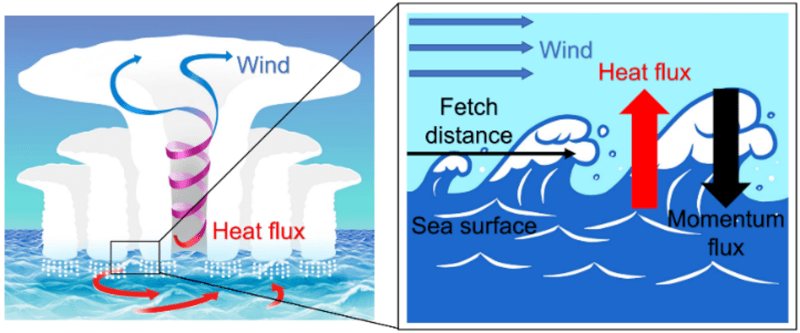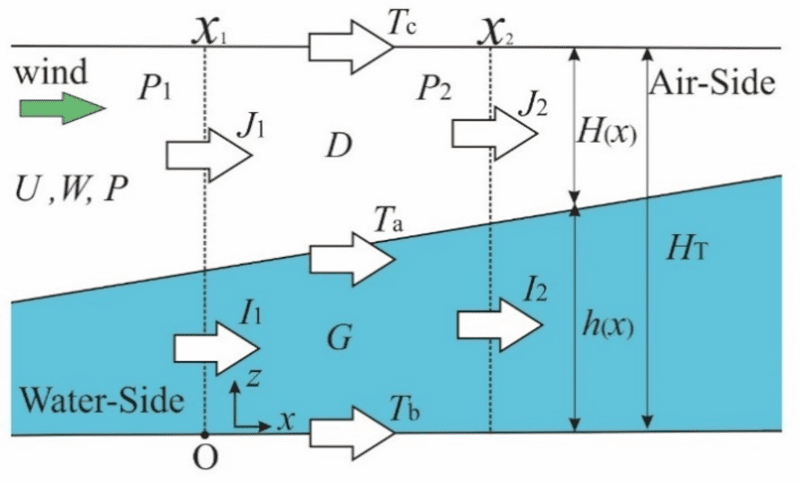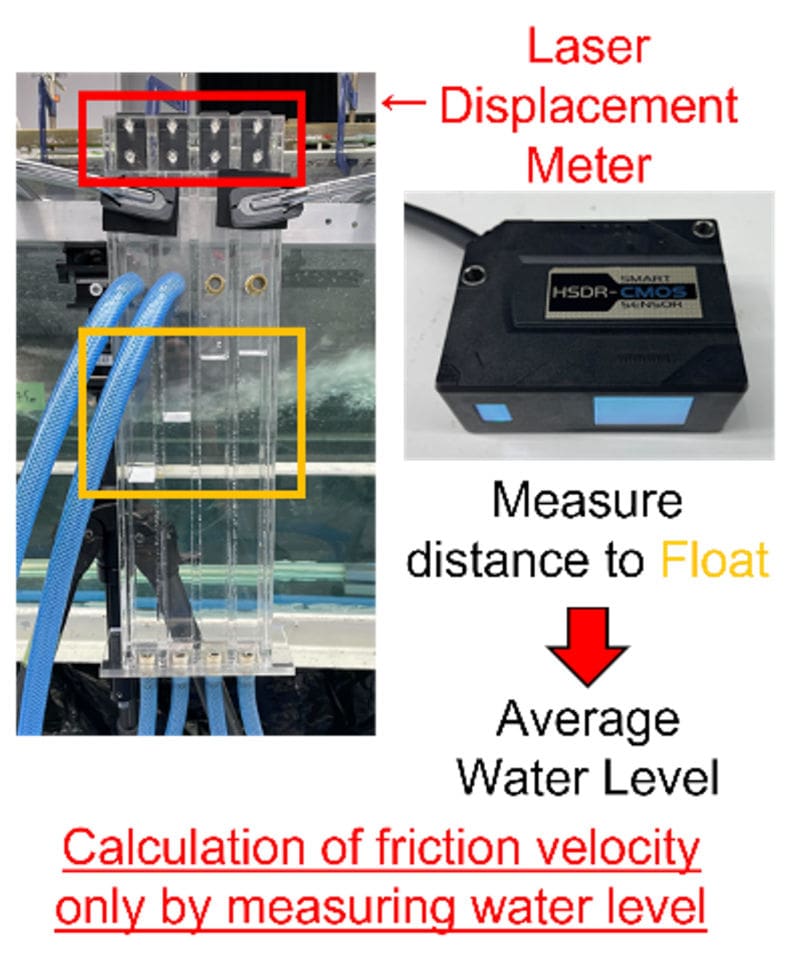Progress Report
Estimation and Control of Air-Sea Momentum and Heat Fluxes of Typhoons3. Air-sea momentum transfer mechanism at extremely high wind speeds
Progress until FY2022
1. Outline of the project
In recent years, the accuracy of typhoon track prediction has been improved, but that of typhoon intensity prediction has not been improved yet. One of the main reasons is that the air-sea momentum and heat transfer mechanisms at high wind speeds in typhoons are complicated, and so it is very difficult to model the momentum and heat fluxes across the sea surface that significantly influence typhoon intensity prediction.
On the sea surface under a typhoon, friction occurs between the atmosphere and the sea surface, resulting in the transfer of the typhoon’s kinetic energy to the sea surface (Fig. 1). The energy transfer due to friction has a significant impact on the track and intensity of a typhoon.
In this R&D theme, we aim to investigate the air-water momentum transfer (flux) at high wind speeds, using the world’s largest typhoon simulation tank located at Research Institute for Applied Mechanics, Kyushu University. We also aim to formulate the momentum flux across the sea surface at high wind speeds and elucidate the momentum transfer mechanism.
Although the air-sea momentum flux has been investigated in our previous studies, the simulation tank used there had a short fetch of 6.5 m. Therefore, the results may not accurately represent the air-sea momentum flux in the wide ocean field. Consequently, we measured the momentum flux at high wind speeds up to 40 m/s and long fetches of up to 30 m using above the largest typhoon simulation tank.

2. Outcome so far
We first estimated the drag coefficient (CD) against wind speed at a fetch of 20 m using both the momentum budget method (Fig. 2) and profiling method in the above typhoon simulation tank. The momentum budget method developed by PI & PM simultaneously enabled to measure the water levels using four water level gauges (Fig. 3) and it allowed us to accurately determine the state of friction between the atmosphere and water surface from the water level fluctuations.
We found that the drag coefficient CD was constant at high wind speeds, whereas at low wind speeds, CD tended to increase with wind speed. The values of CD were generally consistent with our previous studies in different tanks, indicating that the momentum flux may not depend on the difference of fetch.
3. Future plans
In this R&D theme, we will conduct experiments at a long fetch of 30 m and to obtain a more accurate formula of the air-sea momentum flux by elucidating the momentum transfer mechanism. By offering the experimental results on momentum transfer to our simulation group, we will contribute to the improvement of the typhoon prediction accuracy.

